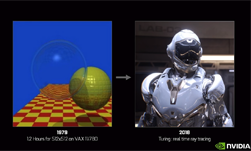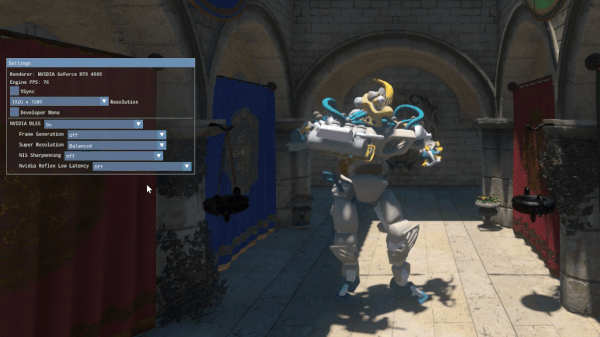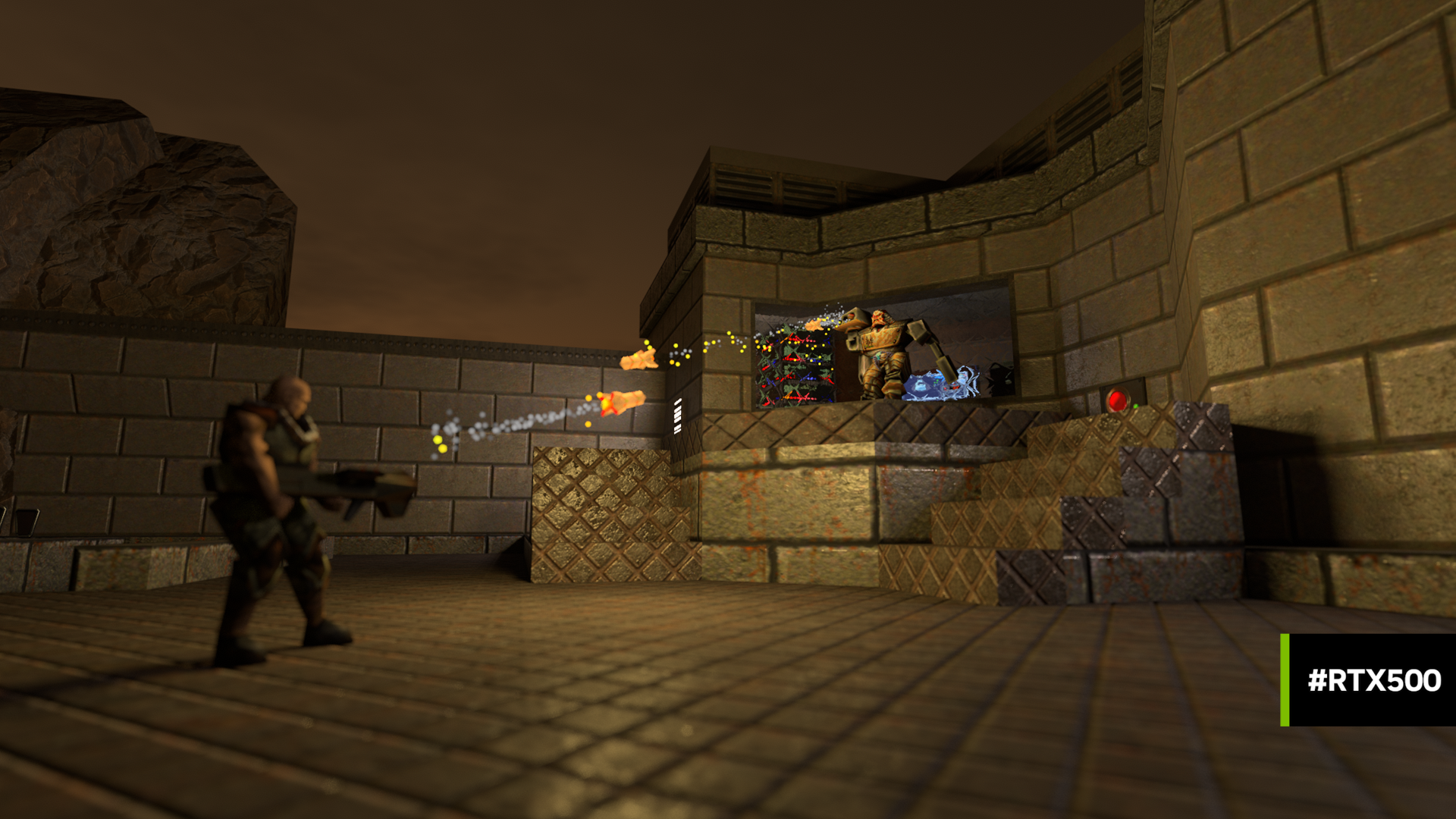The NVIDIA Studio stack including OptiX, MDL and vMaterials provides an unrivaled foundation for RTX rendering applications
This year at Siggraph, NVIDIA is showcasing the latest advances in NVIDIA RTX technology, including AI-enhanced workflows and real-time ray tracing. At the heart of NVIDIA’s rendering solutions lies the OptiX ray tracing engine, providing developers the full performance of Turing’s RT Cores (ray tracing) and Tensor Cores (AI).
OptiX 7 introduces a new low-level CUDA-centric API giving application developers direct control of memory, compilation, and launches while maintaining the programming model and shader types. It also includes a library that provides helper functions to load textures on demand.
Features in OptiX 7.0:
- No host state is maintained. Scene graphs, materials, etc., are managed by the application rather than by OptiX
- GPU memory is managed by the application using CUDA. (No OptiX buffers or variables)
- GPU launches are explicit and asynchronous using CUDA streams
- Shader compilation is explicit. (Similar to DXR or Vulkan)
- All host functions are thread-safe
- Source code for demand loading library is included and designed for direct inclusion in production applications
- Multi-GPU operation is managed by the application
The original OptiX API continues to be supported in parallel and adds new functions for loading textures on demand. Taking advantage of this capability, application developers can reduce the load time, and render scenes with massive texture datasets.
Features in OptiX 6.5:
- OptiX AI denoiser no longer requires redistribution of cuDNN (included in the driver)
- New disk caching features offer flexibility for production environments
- Improved PTX handling (extended instruction set)
- Improved build times (3x to 4x faster on average)
- Hit shaders can access triangle vertex data, motion blur data, and the transformation stack
- Nsight Compute 2019.4 & NsightVSE 2019.3 Debugger OptiX application profiling support [Coming Soon]
- OptiX RTCore modules are identified
- All public OptiX module and Application/User kernels called by OptiX are visible
- NsightVSE can set breakpoints, inspect GPU state, and debug with expected run control through application code
As part of the NVIDIA Studio Stack, updated SDKs and tools help developers take full advantage of their GPU resources. New MDL SDK and vMaterial library releases enhance the rich RTX rendering ecosystem as well. MDL SDK 2019.1.1 adds support for the newly released MDL v1.5 specification and vMaterials 1.6 adds hundreds of new materials bringing the library to over 2000 material definitions!
MDL SDK 2019.1.1
- MDL 1.5: hair (no code generation yet)
- MDL 1.5: new BSDF modifier df::measured_factor
- MDL 1.5.: MDL encapsulated format (MDLE)
- support for HLSL code generation
- DXRT rendering sample
- enhanced CUDA/Optix support for runtime texture changes
- now uses LLVM 7
- distilling of transmissive materials (transmissive_pbr)
- And more
vMaterials 1.6
Attending Siggraph?
Talks and courses will dive deep into the newest methods and technologies driving the industry. From Academy Award winners to major production studios, industry experts will explain how NVIDIA RTX is accelerating workflows to power the future of content creation.
- NVIDIA booth #1303 and #1313, showcasing multiple OptiX accelerated renderers as well as Nsight Graphics for profiling and debugging OptiX shaders.
- GPU Ray Tracing for Film and Design, showcasing speakers from Autodesk, Chaos Group, Isotropix, Pixar and Weta
- RTX Accelerated Ray Tracing with OptiX
For more information about NVIDIA at SIGGRAPH, refer to our complete SIGGRAPH schedule page.
Developers looking to leverage RTX ray tracing can download NVIDIA OptiX SDK 7.0 and get started today!










